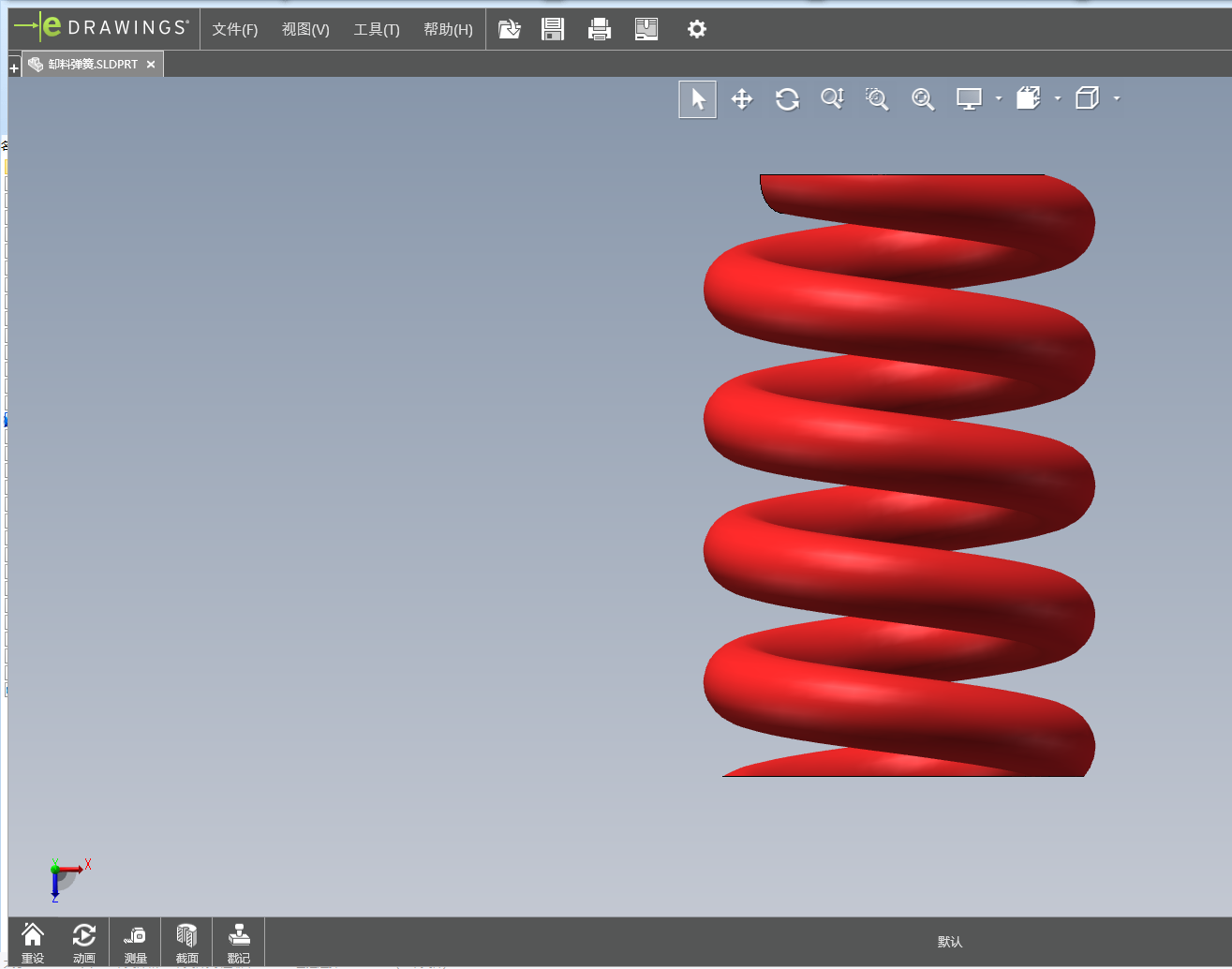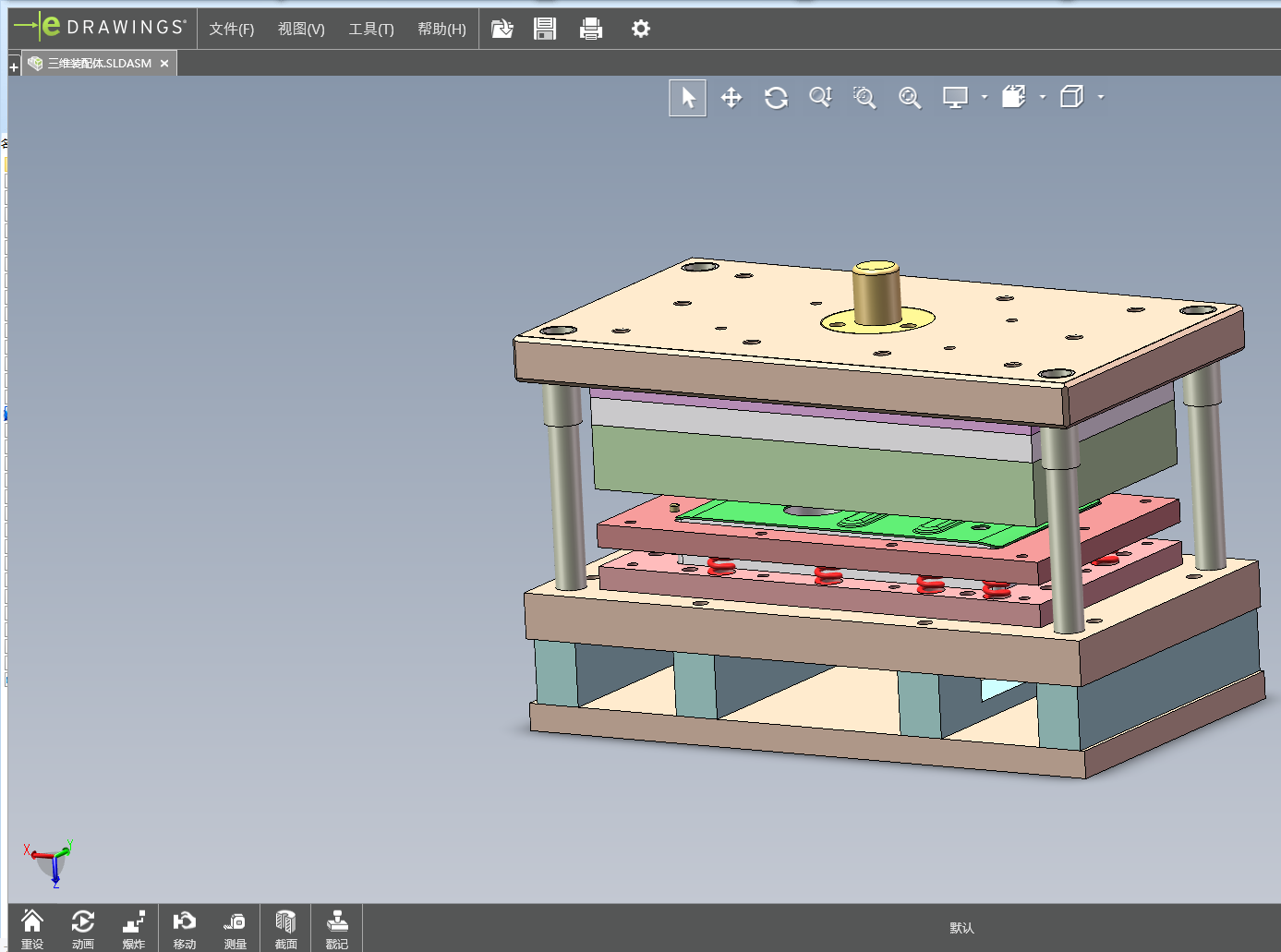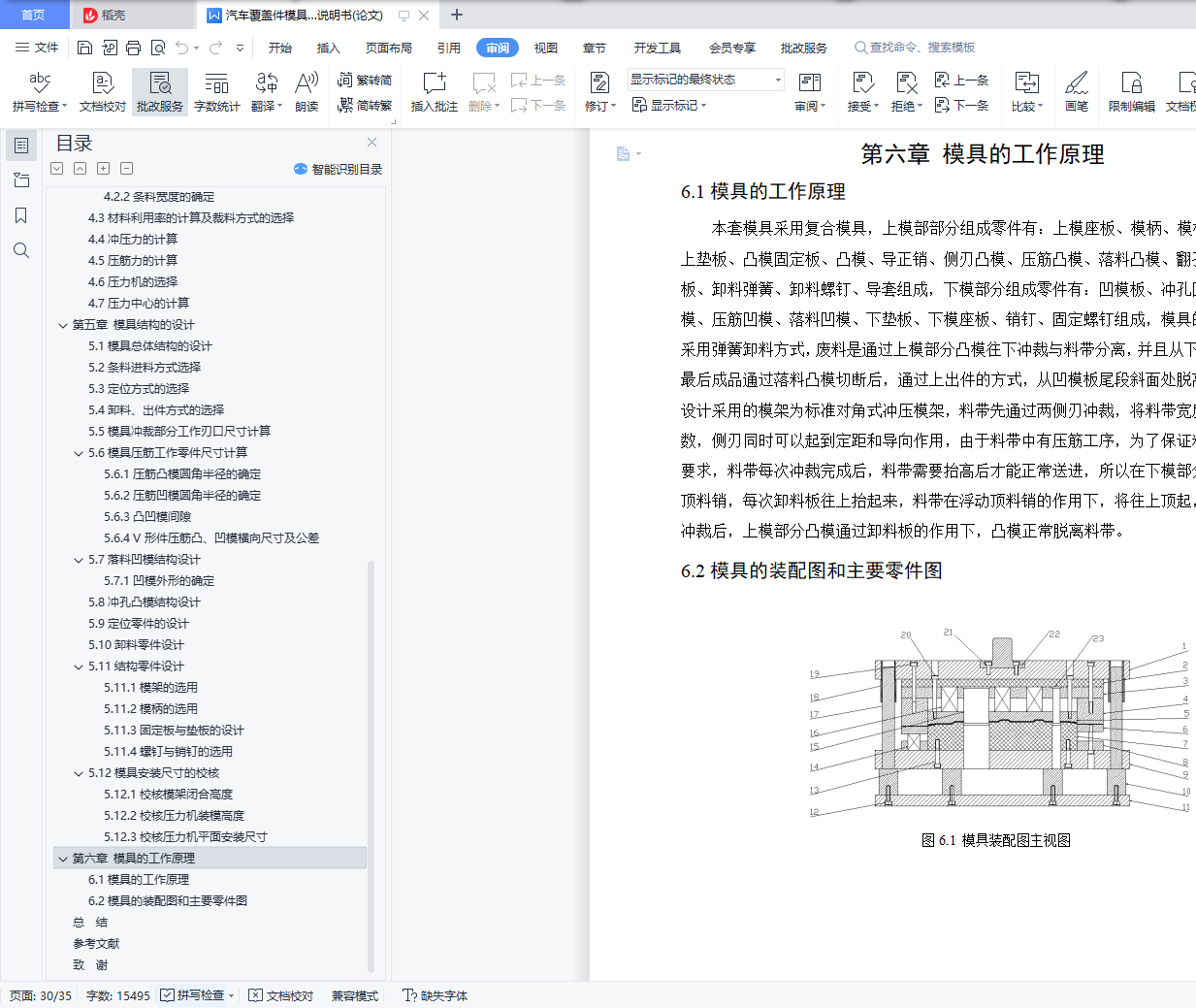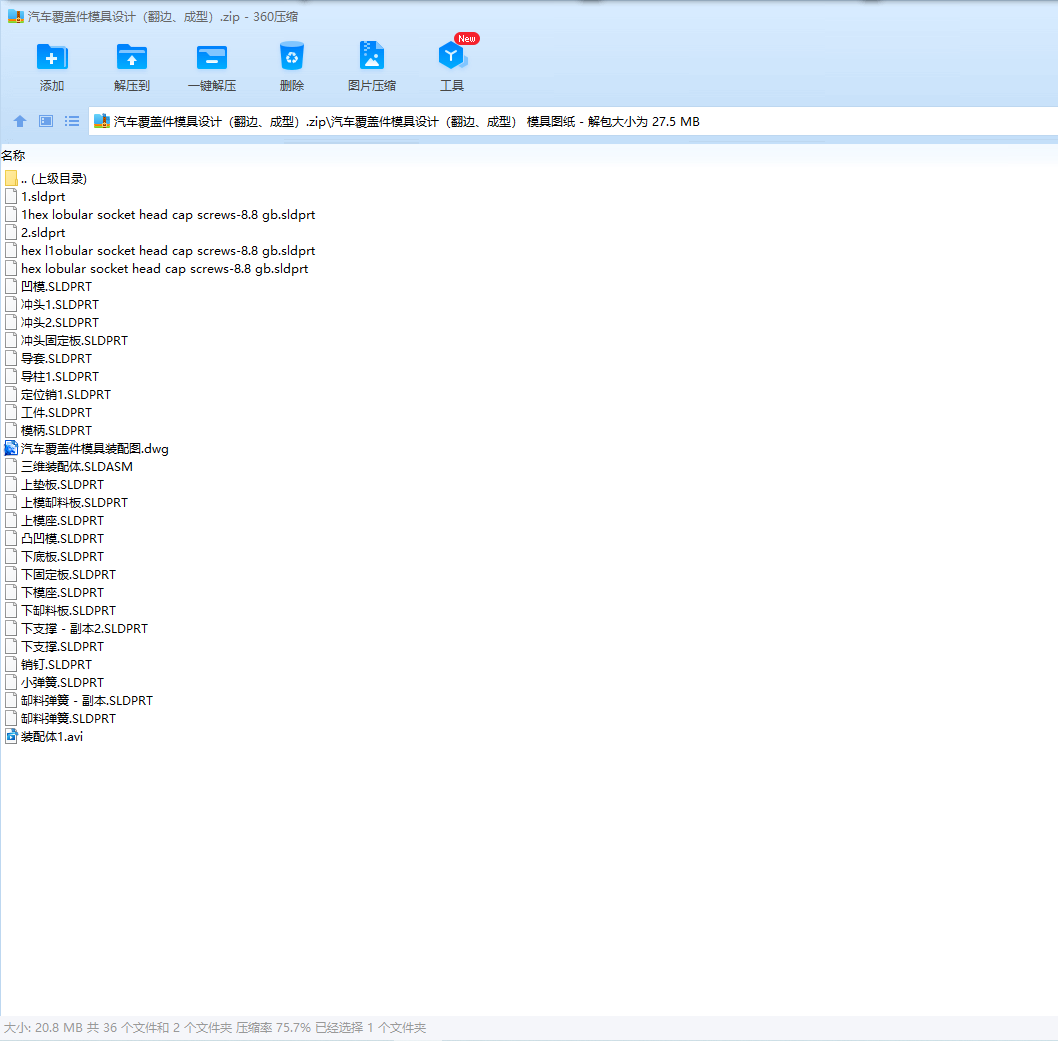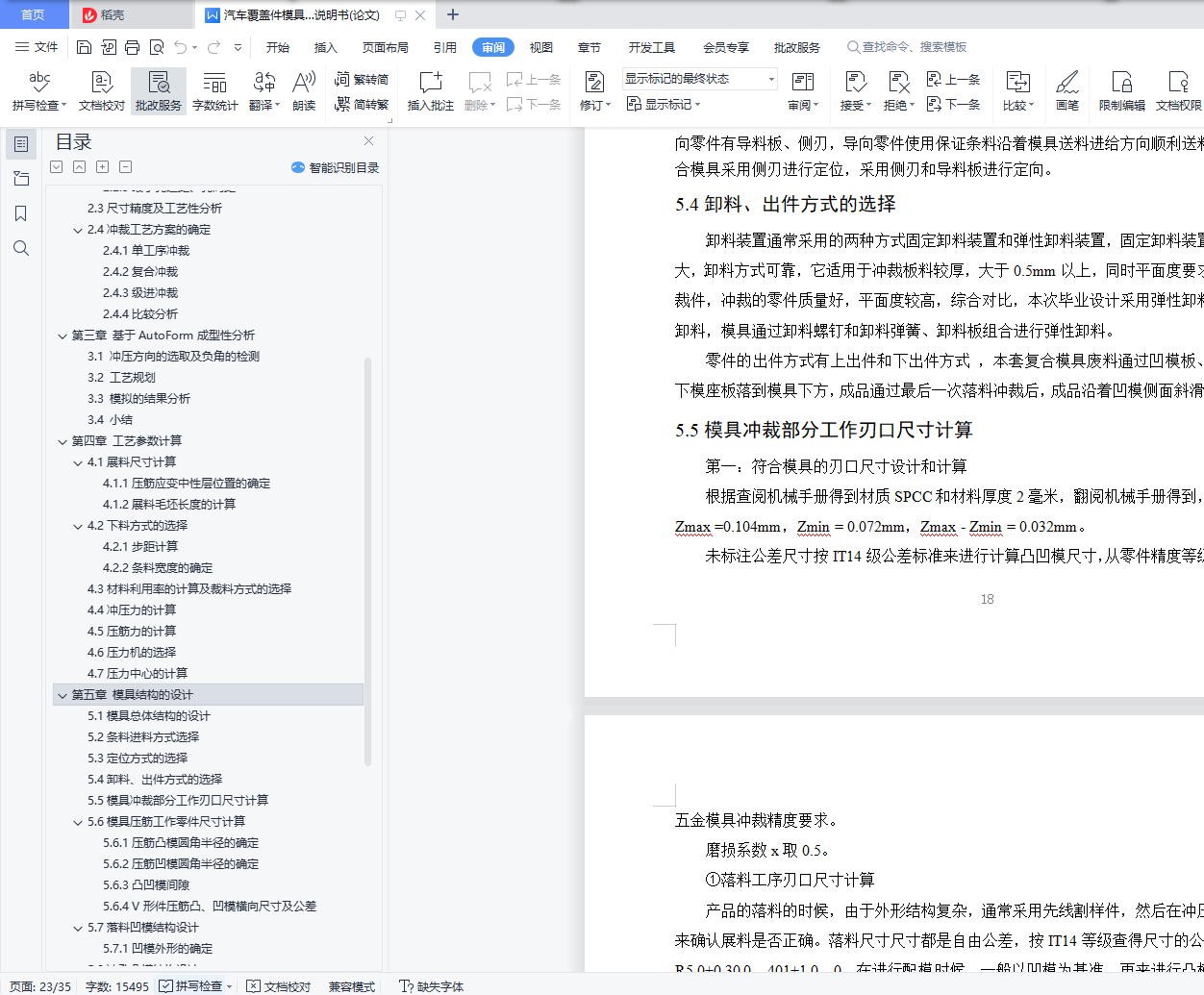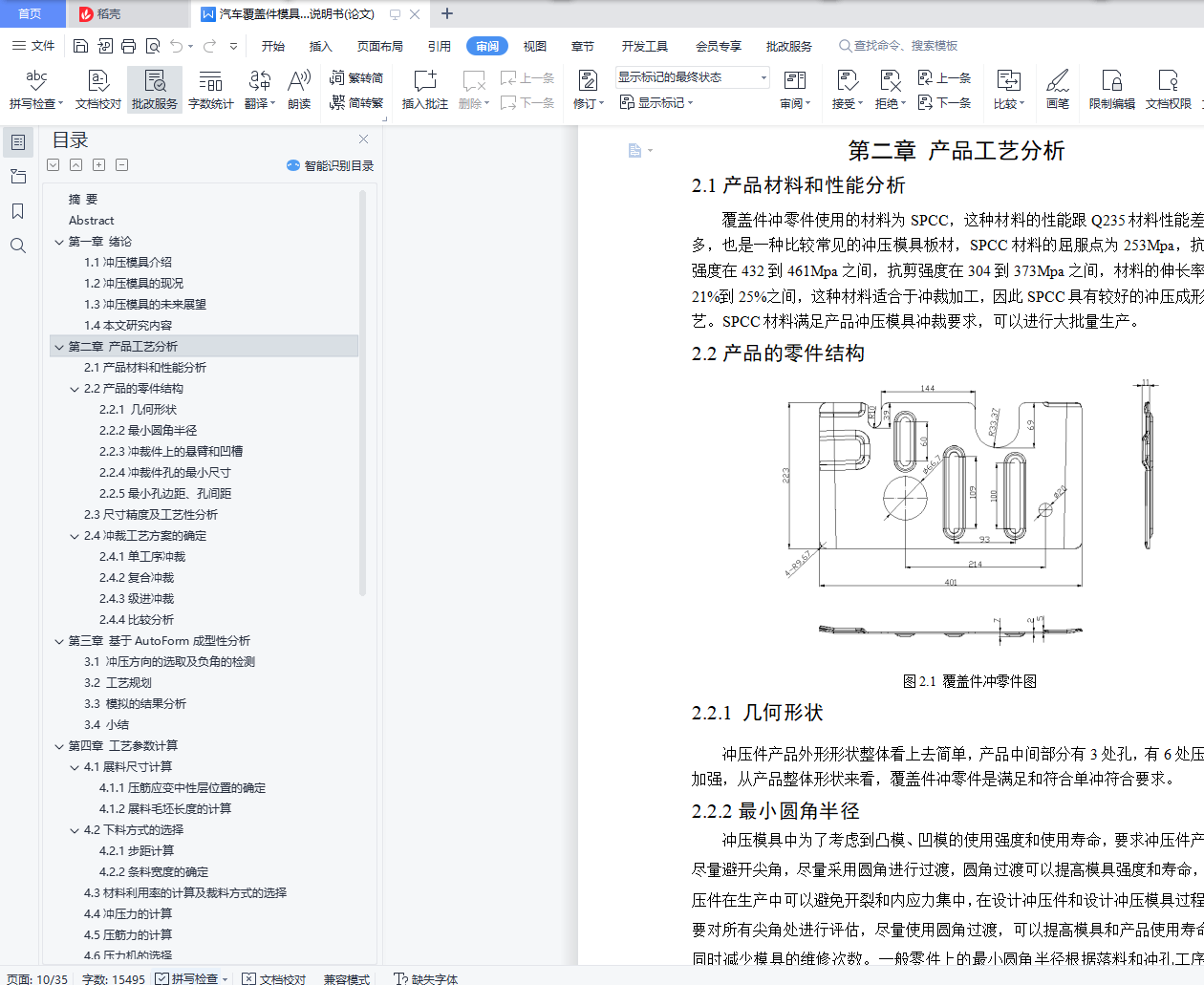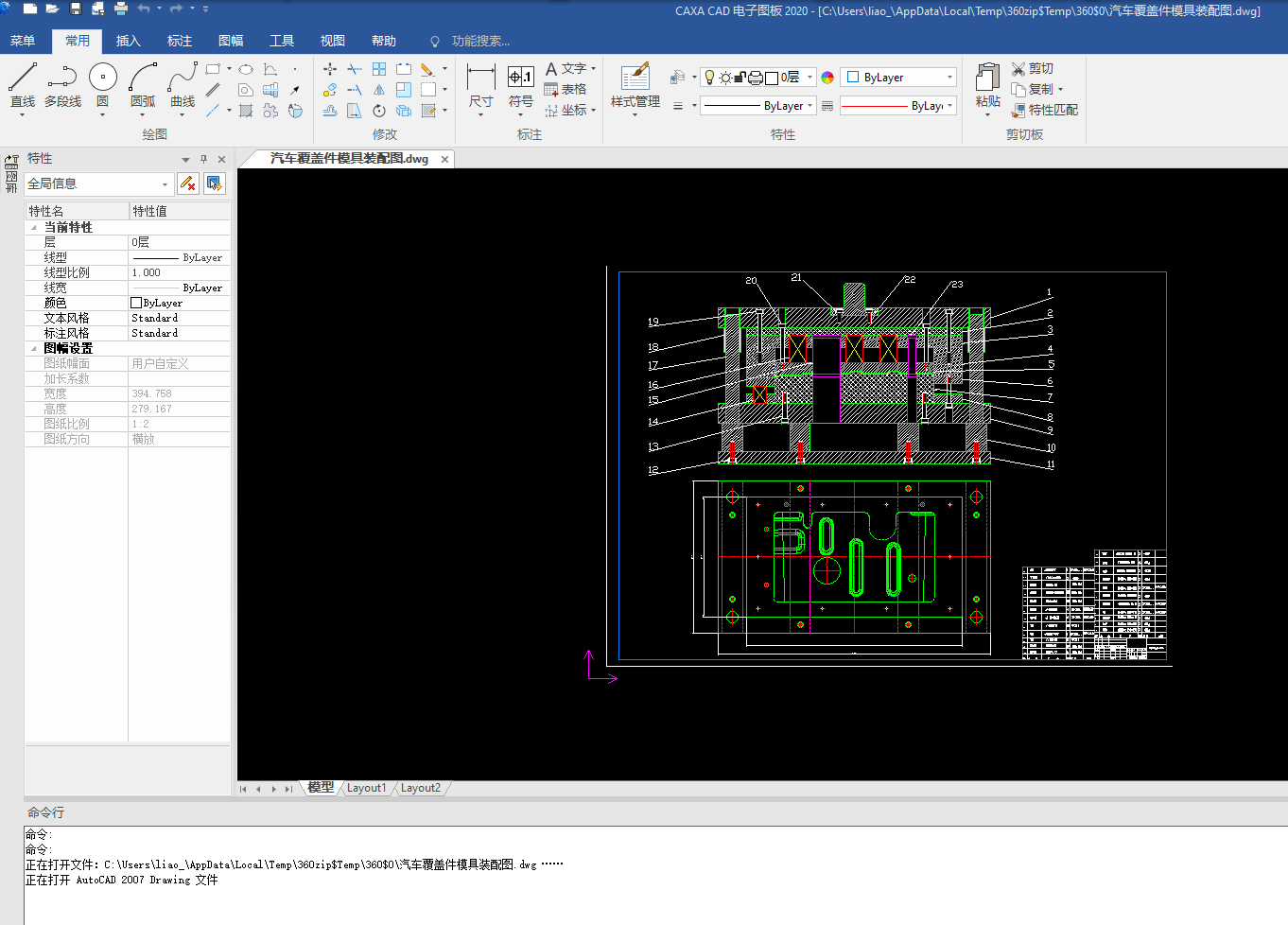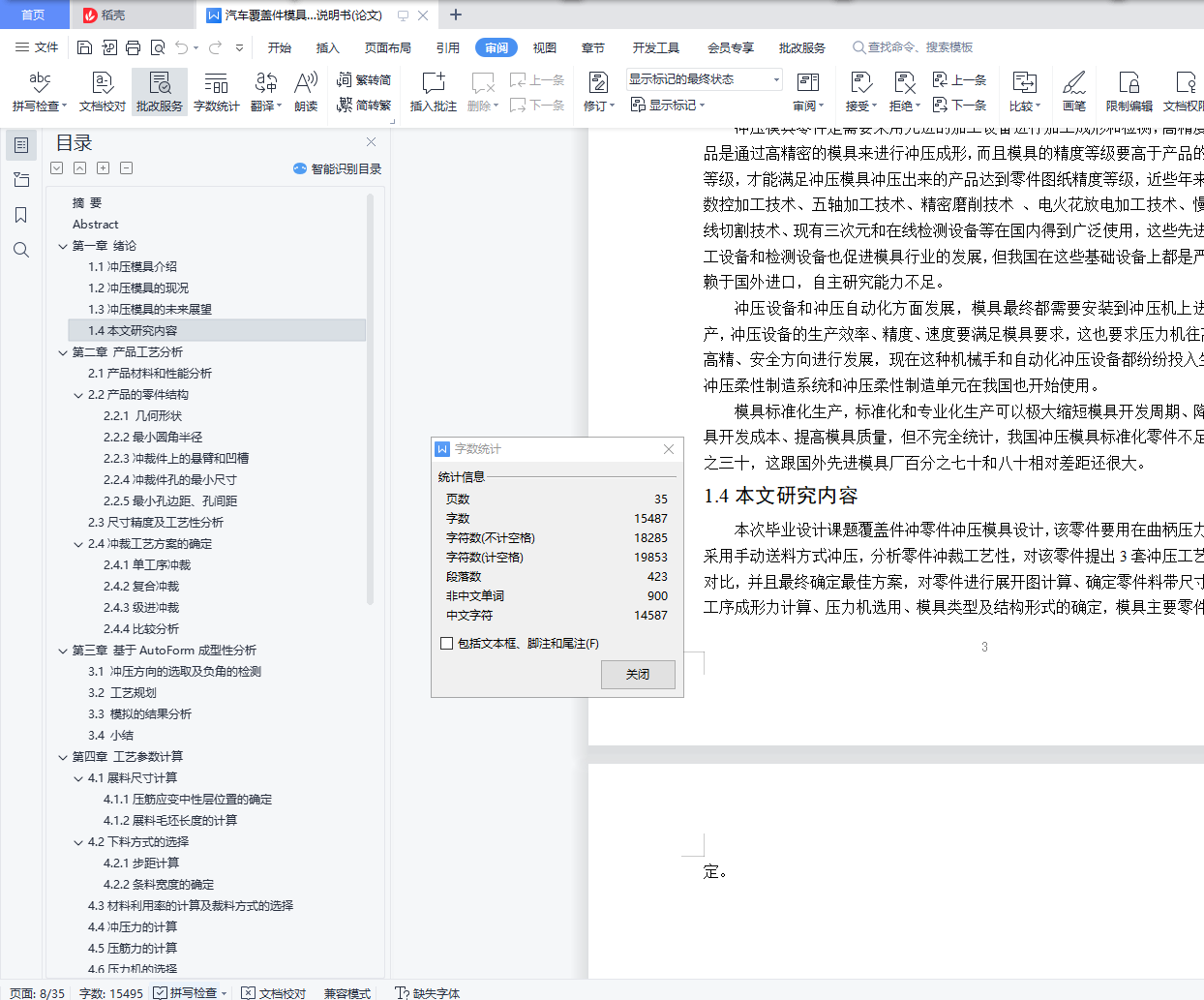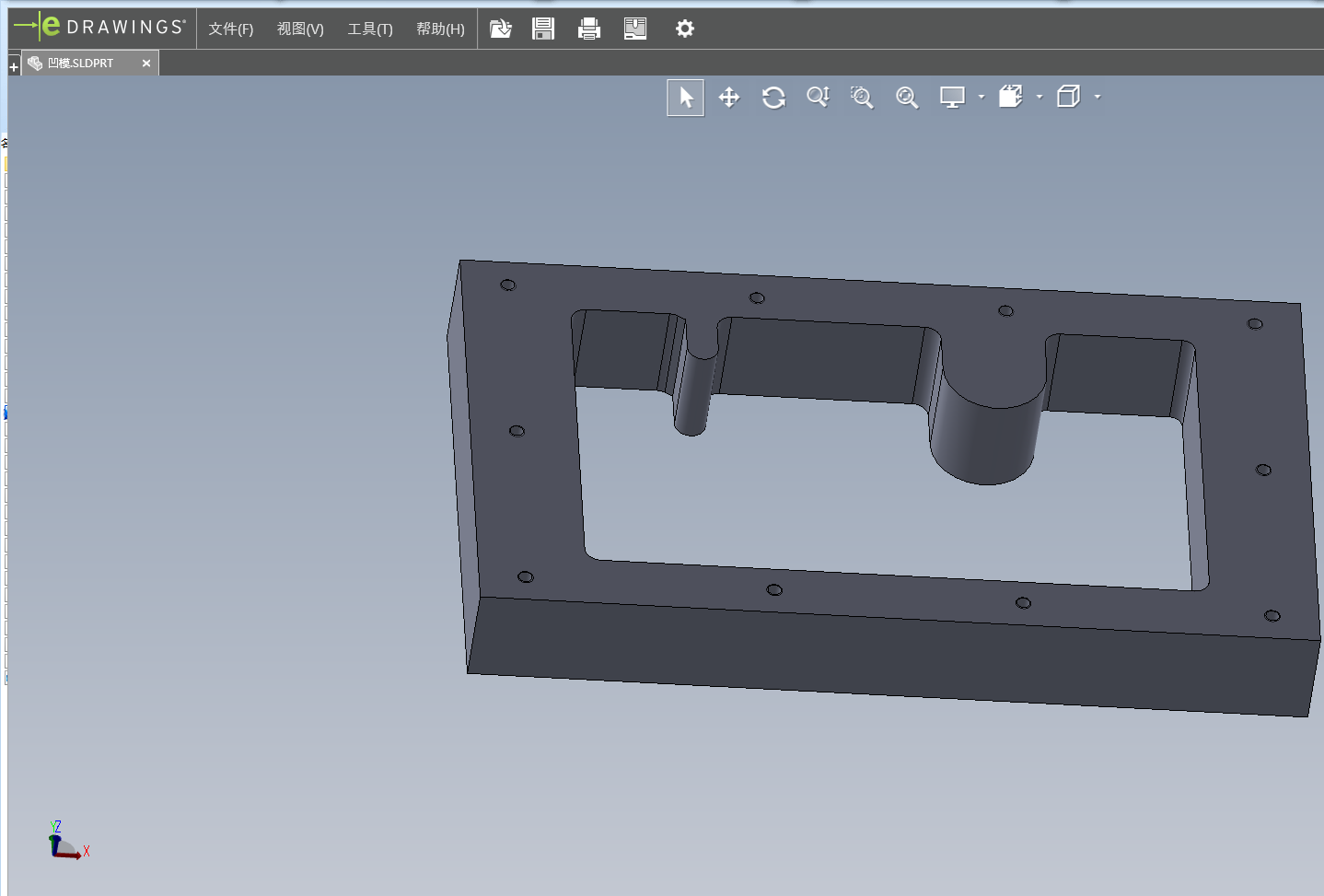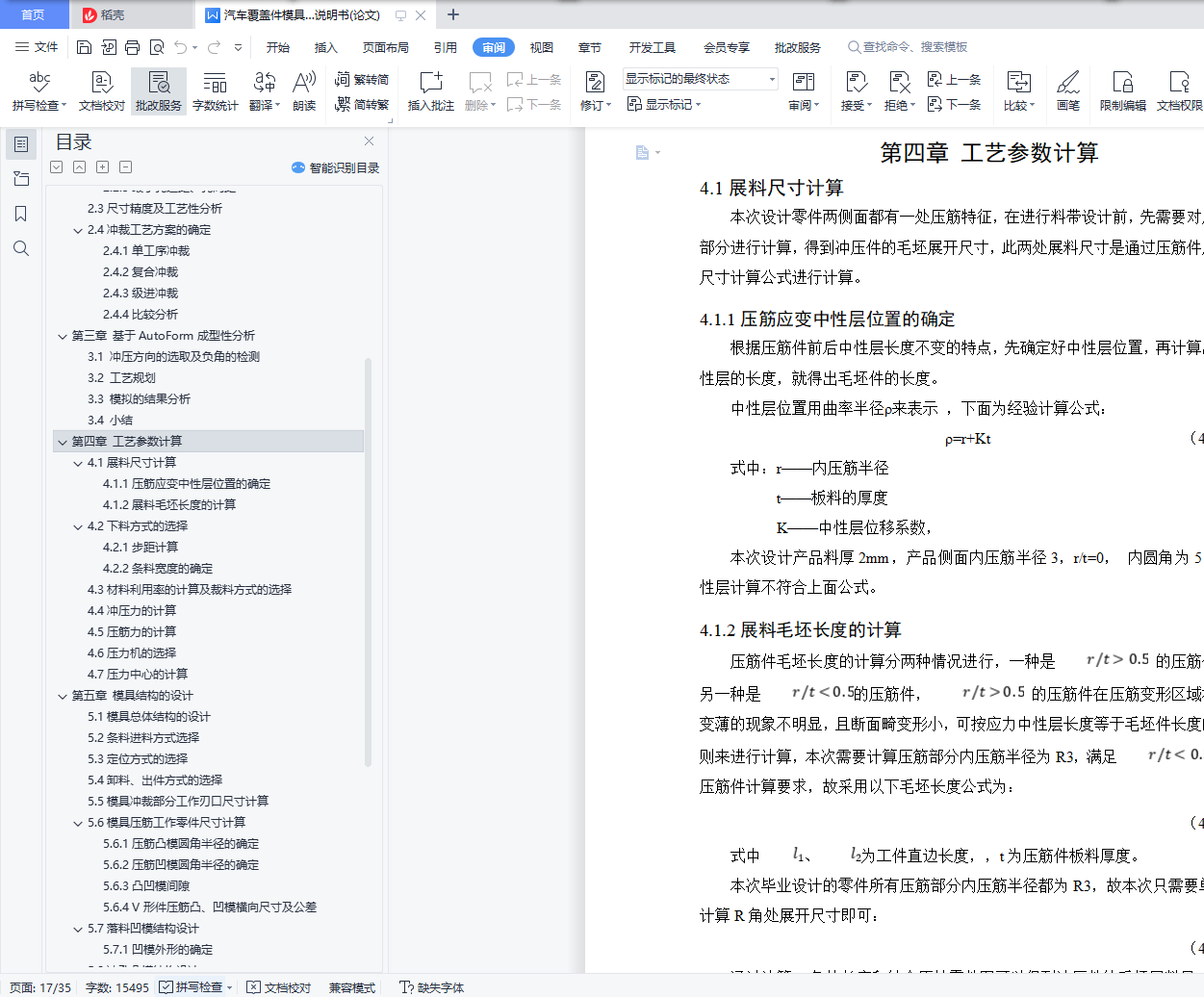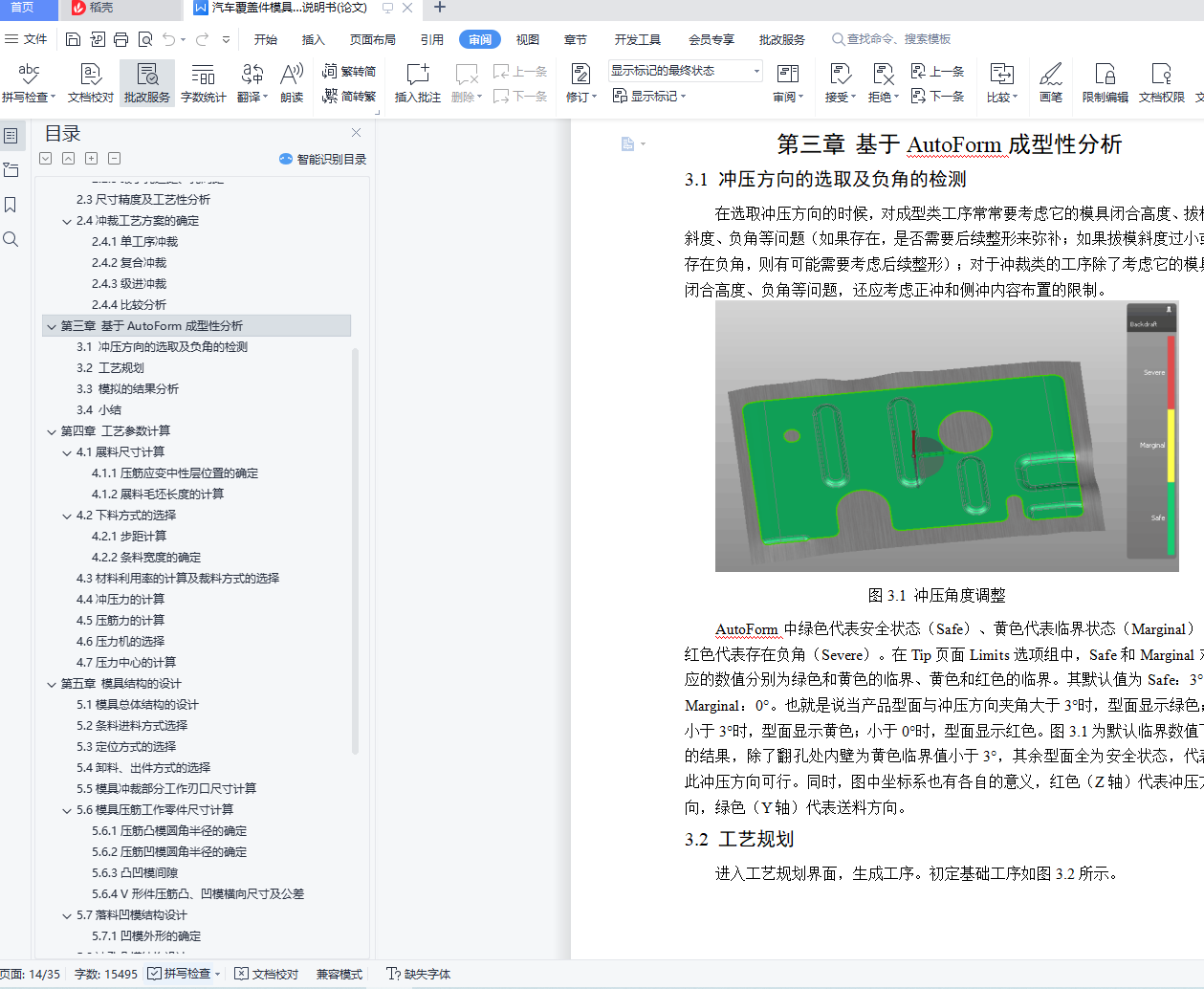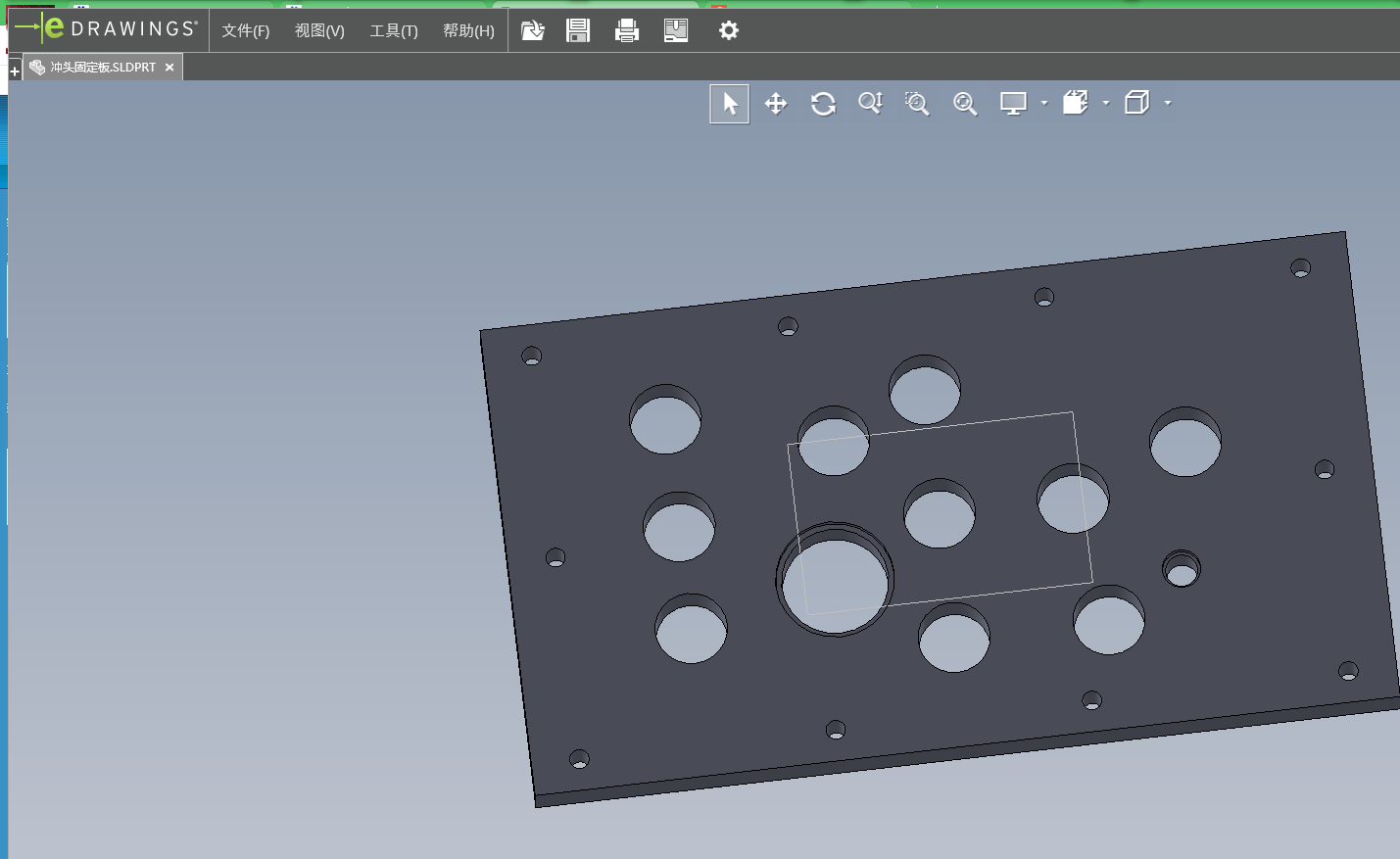摘 要
本设计是汽车覆盖件的翻边及成型模具的设计,冲压件产品需要冲孔、滚边、下料。成型特性、成型工艺。复合模具以其生产效率高、批量生产成本低、操作安全方便、产品质量稳定性高等优点而得到广泛应用。
本毕业项目详细介绍了板材工艺方案分析、材料利用率计算、冲压模具结构设计、冲裁力、切边、压边力和冲模扭矩计算。落料压芯的选择与校准,模具冲头与模具成型尺寸计算,模具长宽高尺寸计算,标准模架选择与校准,模具模板计算与选择,板材定位系统设计,模具导轨系统设计,产品交付和注射方法设计等。最后,使用3D软件SolidWorks绘制模具的3D图纸,使用AutoCAD 2D软件绘制模具的2D装配图和零件图,并创建模具设计规格。
关键词:覆盖件;冲压;模具;翻边,成型;
Abstract
This design is the design of automobile cover edge and molding mold, and stamping parts products require punching, rolling edge and feeding.Forming characteristics and forming process.Composite mold is widely used for its advantages of high production efficiency, low mass production cost, safe and convenient operation and high product quality stability.
This graduation project introduces the plate process scheme analysis, material utilization calculation, stamping die structure design, cutting force, edge cutting, pressing edge force and die torque calculation.Selection and calibration of drop material pressure core, die punch and die molding size calculation, die length, width and height size calculation, standard die frame selection and calibration, die template calculation and selection, plate positioning system design, die guide rail system design, product delivery and injection method design, etc.Finally, 3D drawings of the mold were drawn using the 3D software SolidWorks, 2D assembly and part drawings of the mold using AutoCAD 2D software, and the mold design was created.specifications.
Key words: covering parts; stamping; mold; turning edge, molding;
目 录
摘 要
Abstract
第一章 绪论
1.1冲压模具介绍
1.2冲压模具的现况
1.3冲压模具的未来展望
1.4本文研究内容
第二章 产品工艺分析
2.1产品材料和性能分析
2.2产品的零件结构
2.2.1 几何形状
2.2.2最小圆角半径
2.2.3冲裁件上的悬臂和凹槽
2.2.4冲裁件孔的最小尺寸
2.2.5最小孔边距、孔间距
2.3尺寸精度及工艺性分析
2.4冲裁工艺方案的确定
2.4.1单工序冲裁
2.4.2复合冲裁
2.4.3级进冲裁
2.4.4比较分析
第三章 基于AutoForm成型性分析
3.1 冲压方向的选取及负角的检测
3.2 工艺规划
3.3 模拟的结果分析
3.4 小结
第四章 工艺参数计算
4.1展料尺寸计算
4.1.1压筋应变中性层位置的确定
4.1.2展料毛坯长度的计算
4.2下料方式的选择
4.2.1步距计算
4.2.2条料宽度的确定
4.3材料利用率的计算及裁料方式的选择
4.4冲压力的计算
4.5压筋力的计算
4.6压力机的选择
4.7压力中心的计算
第五章 模具结构的设计
5.1模具总体结构的设计
5.2条料进料方式选择
5.3定位方式的选择
5.4卸料、出件方式的选择
5.5模具冲裁部分工作刃口尺寸计算
5.6模具压筋工作零件尺寸计算
5.6.1压筋凸模圆角半径 的确定
的确定
5.6.2压筋凹模圆角半径 的确定
的确定
5.6.3凸凹模间隙
5.6.4 V形件压筋凸、凹模横向尺寸及公差
5.7落料凹模结构设计
5.7.1凹模外形的确定
5.8冲孔凸模结构设计
5.9定位零件的设计
5.10卸料零件设计
5.11结构零件设计
5.11.1模架的选用
5.11.2模柄的选用
5.11.3固定板与垫板的设计
5.11.4螺钉与销钉的选用
5.12模具安装尺寸的校核
5.12.1校核模架闭合高度
5.12.2校核压力机装模高度
5.12.3校核压力机平面安装尺寸
第六章 模具的工作原理
6.1模具的工作原理
6.2模具的装配图和主要零件图
第七章 经济性分析
总 结
参考文献
致 谢
